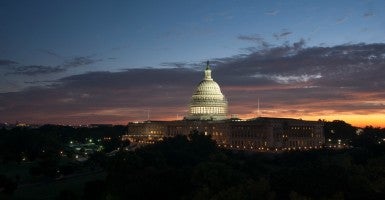Promised savings rarely materialize to their fullest extent when it comes to federal spending. From budget gimmicks to accounting tricks, government agencies and Congress have their ways of making savings elusive.
A House Budget Committee inquiry raised awareness for yet another example of elusive savings and a lack of transparency in government accounting: The public and Congress don’t know how much sequestration actually saved in any given year.
For background, the Budget Control Act of 2011 required automatic spending reductions of $1.2 trillion over a decade, in the event the congressional “supercommittee” failed to come to agreement on reforms to accomplish savings of that size. Those required savings were divided between mandatory and discretionary programs.
Yet unlike discretionary programs, which receive annual budget authority that could be cut from one year to the next, most mandatory programs are governed by indefinite budget authority, making cuts harder to carry out and track.
The Office of Management and Budget is required to provide estimates concerning how much agencies should sequester from mandatory spending accounts at the beginning of the year, but the actual figures sequestered at the end of the year could end up being very different from those estimates. The House Budget Committee directed the Government Accountability Office to study the implementation of sequestration on mandatory accounts and any related effects.
The GAO’s report, published in April, identified a lack of accountability and transparency in federal sequestration reporting. Congress and the public have no way of knowing how much sequestration actually saved. Lack of information in turn thwarts efforts at accountability.
Fiscal conservatives are presented with two key challenges in holding the executive accountable to these mandatory spending reductions. First, that the government does not keep complete records of actual budget authority (the amount actually sequestered, by account). And second is that some of the savings are merely temporary. The GAO reports: “In certain cases, sequestered amounts become available to agencies in subsequent fiscal years, thereby reversing the corresponding savings from those reductions.”
Fake savings from a timing shift? Say it isn’t so!
As it turns out, the law governing the sequestration process allows the federal government to sequester amounts from certain accounts that are financed by user fees, for example, for one year and then return the sequestered funds the following year to the agencies for expenditure. This means that the federal government is spared from having to actually carry out certain cuts by easing some of the burden of sequestration through this timing shift loophole.
The Government Accountability Office recommends that the Office of Management and Budget publicly report the total amount of temporarily sequestered funds; and the total amount of sequestered funds, government-wide, at the end of the fiscal year.
This information is absolutely critical to ensuring that deficit reduction required by the Budget Control Act is carried out as intended, and that estimated savings actually materialize, and are not merely elusive.
It would seem easy enough for the Office of Management and Budget to provide this information. And while the Office of Management and Budget is reportedly working toward identifying and reporting those savings that result from the timing shift, the agency pushed back on providing the total amounts sequestered at the end of the fiscal year. Yet both components are critical for fiscal transparency and accountability, and especially when viewed in comparison with each other.
Congress should require that the Office of Management and Budget report both the total amount sequestered in any given fiscal year, and the portion of temporarily sequestered funds that become available for expenditure in the following year.
Congress should further seek to amend section 256(k)(5) of the Balanced Budget and Emergency Deficit Control Act by exempting revolving, trust, and special fund accounts and offsetting collections from being temporarily sequestered. This would close the timing shift loophole such that sequestered savings represent real savings. Relatedly, Congress should continue to work toward eliminating other elusive savings, like Changes in Mandatory Programs or CHIMPS, which are often abused in appropriations bills.
The nation’s fiscal challenges are real and require real savings to make progress toward balancing the budget and reducing the national debt. Elusive savings simply mock required deficit reduction.
This piece has been updated by the author to correctly state section of the Balanced Budget and Emergency Deficit Control Act.



























